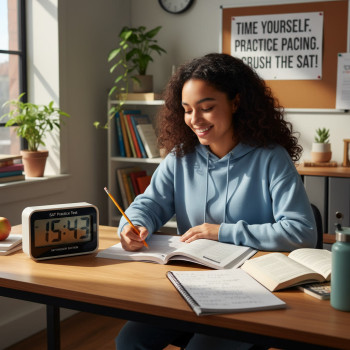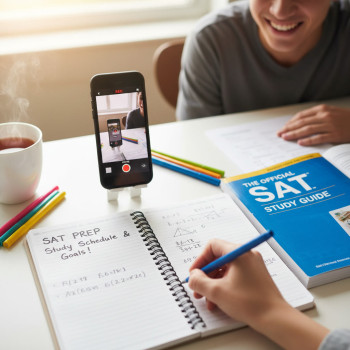Yes — but it’s not the whole story: What a 1500 SAT really means
Let’s cut to the most important part: a 1500 on the SAT is an excellent score. It puts you in a high percentile of test takers and signals strong academic readiness. For students applying to very selective colleges, it is a competitive number that will command attention. But college admissions are holistic—grades, rigor of coursework, extracurriculars, essays, letters of recommendation, demonstrated interest, and sometimes personal background all join the SAT to tell your story.

How colleges actually use SAT scores
Admissions officers view SAT scores as a standardized snapshot that helps compare students from different schools and backgrounds. For many colleges, the SAT acts as a tie-breaker or an enhancer when an application falls into a gray area. For others, it’s also useful for scholarship qualification and course placement.
Think of the SAT as a powerful accent in your application language: it strengthens certain claims (you’re analytically and verbally prepared for college-level work) but it won’t erase other gaps (like a weak transcript or shallow extracurricular involvement).
Where a 1500 tends to land you
- For the most selective institutions (Ivy League and comparable top-20 schools), a 1500 is often within or near the middle 50% of admitted students. It’s competitive but not guaranteed to secure admission by itself.
- For top-50 schools, a 1500 is typically a strong score that makes you a clear academic contender.
- For many excellent state and private institutions, a 1500 is above-average and can help you access merit scholarships.
Numbers of context: interpreting percentiles and score ranges
Raw SAT numbers are useful, but percentiles and a school’s admitted score range give the real context. Colleges commonly publish the middle 50% SAT range (the 25th to 75th percentile) of their incoming class. If a 1500 sits above the 75th percentile for a college, you’re a “safety” academically; if it sits in the middle 50%, you’re a “match”; if it is below the 25th percentile, the school is a “reach.”
Quick illustrative table: Where 1500 fits (example ranges)
| Type of College | Typical Middle 50% SAT Range (example) | How 1500 Reads |
|---|---|---|
| Most selective (Top 10–20) | 1460–1580 | Competitive; within middle 50% for many, but still a reach at the very top |
| Top 50 | 1350–1520 | Strong; often in the upper half |
| Strong regional / state universities | 1200–1400 | Above average; may earn merit consideration |
Note: Ranges differ by major, year, and applicant pool. STEM and engineering programs—especially at top technical schools—often have higher typical scores. Use the college’s published data (middle 50% ranges) when planning your list.
Holistic admissions: the things that matter alongside your 1500
Getting accepted to a top school with a 1500 is common—but it becomes much more predictable when you strengthen the rest of your profile. Admissions is a multi-dimensional decision. Here’s what usually counts:
- Unweighted and weighted GPA: Your transcript’s consistency and upward trajectory matter more than single test-day performance.
- Rigor of courses: AP, IB, honors, dual-enrollment, and advanced coursework demonstrate intellectual curiosity and readiness.
- Essays and personal statements: Your voice and fit are revealed here—unique, specific essays can make a 1500 feel much more compelling.
- Extracurriculars and leadership: Depth and impact (not just breadth) show commitment and potential contribution to campus life.
- Recommendations: Strong, specific endorsements from teachers or mentors add credibility to your academic persona.
- Demonstrated interest and fit: For some private colleges, showing sincere interest (campus visits, interviews, targeted essays) can nudge decisions.
Example: Two students, both with 1500—different outcomes
Student A: 1500 SAT, 3.9 weighted GPA, four APs, captain of a math team that built a community tutoring program, strong essay about growth after a family hardship, glowing teacher recs → Very competitive for top 20–50 schools.
Student B: 1500 SAT, 3.4 GPA, limited challenging coursework, scattered extracurriculars with little leadership, generic essays → More likely to face rejections at very selective schools because the transcript and narrative don’t support the test score.
Test-optional policies and how a 1500 plays in that world
Many colleges maintain test-optional policies, meaning students can choose whether to submit SAT scores. In a test-optional era, a 1500 is an opportunity:
- If your transcript and profile are already very strong, submitting a 1500 can simply reaffirm your readiness.
- If there are questions about your GPA or course rigor, a 1500 can clarify your academic potential.
- At schools where many applicants apply without test scores, submitting an excellent score can give you a measurable advantage in certain contexts (scholarships, course placement, or merit review).
Scholarships, honors, and other concrete benefits of a 1500
One tangible advantage of a 1500 is eligibility for merit scholarships at a wide range of institutions. Many universities use SAT thresholds to allocate scholarship tiers. That means a 1500 can translate into significant financial aid at schools that still use merit criteria.
How to leverage a 1500 for scholarships
- Check each college’s published scholarship criteria (some list SAT cutoffs for different award levels).
- Apply early or by scholarship deadlines—some awards have separate deadlines or require an explicit application.
- Highlight test-based awards in your financial planning and compare net-cost outcomes across final acceptances.
When a 1500 might not be enough
Yes, there are scenarios where a 1500 alone won’t clear the path:
- If a college’s typical admitted range skews toward 1550–1600 for a specific major, 1500 could be below the median and make you a slimmer target.
- If your transcript demonstrates inconsistency, gaps, or academic decline, admissions committees may worry about fit and resilience.
- For ultra-competitive programs (certain engineering tracks, computer science majors, or honors colleges), competition can be extreme; 1500 helps but is not a guarantee.
Practical game plan: turning a 1500 into the best possible application
If you already have a 1500, congratulations—you’re in a strong position. Here’s a realistic, actionable plan to translate that score into acceptances and scholarships.
1. Build a balanced college list
- Include reach schools where 1500 is in or slightly below the middle 50%.
- Pick several match schools where 1500 is comfortably within the middle range.
- Add safety schools where 1500 is above the 75th percentile—these are also opportunities for merit aid.
2. Strengthen non-test parts of your application
- Polish essays with a clear narrative—show growth, curiosity, and how you’ll contribute on campus.
- Ask recommenders who know you well and can provide specific anecdotes.
- Show depth in extracurriculars—selectivity favors sustained impact over many shallow activities.
3. Use your SAT for scholarships and honors admissions
- Target schools with clear merit thresholds and apply to scholarship-specific opportunities.
- Consider honors colleges at state universities—many offer great academics plus scholarship money for high test scores.
4. Consider retesting strategically (only if it makes sense)
If you believe a higher score is attainable without sacrificing other parts of your application, another test attempt could push you into a different tier (e.g., 1500 → 1550–1560). But don’t retest at the cost of weak essays, losing recommendation deadlines, or missing scholarship dates.
How families and students can decide whether to submit a 1500
Ask straightforward questions:
- Does the 1500 fall within or above the college’s middle 50%? If yes, submit it.
- Does the rest of the application support this score? If yes, submit it.
- Would submitting the score help with scholarship consideration? If yes, submit it.
When in doubt, talk with your school counselor or an admissions coach to review school-specific data. Many students find it helpful to use College Board’s BigFuture profiles or each college’s admitted student profile to make an informed decision.
Where personalized help makes the difference
The strategic choices—when to submit, whether to retest, how to shape essays and recommenders—are often what separate an excellent application from a great one. That’s where targeted, personalized support pays off.
Sparkl’s personalized tutoring is a good example of how tailored guidance can elevate an application. One-on-one tutoring can refine test techniques and timing for the Digital SAT, create a tailored study plan that preserves your strongest application elements, and use AI-driven insights to identify which colleges would benefit most from your 1500. Expert tutors can also help edit essays so your voice shines without sounding rehearsed.
What to expect from effective personalized tutoring
- Diagnostic assessments that pinpoint exactly which sections of the Digital SAT to prioritize.
- Custom study plans that respect schoolwork and extracurricular commitments.
- Targeted practice tests with realistic timing and device setup to mirror the Digital SAT environment.
- Strategic advice on when to submit scores and how to pair them with other application elements.
Real-world examples and scenarios
Example 1: Maya, 1500, Aspiring Biologist — Maya paired her 1500 with a 4.0 in AP Bio and math, a research internship, and a personal statement about scientific discovery in her community. She applied to a mix of top research universities and state flagships—her 1500 helped unlock merit aid at two top public universities and a spot in an elite undergraduate research program.
Example 2: Jamal, 1500, Creative Writer — Jamal’s SAT was great, but his transcript had two tough semesters due to family illness. He used his essays to narrate resilience and demonstrated healing through sustained leadership in a school literary magazine. Several schools accepted him because the score confirmed his academic ability while the essays explained his unique trajectory.
Final checklist: Maximize a 1500
- Audit each college’s middle 50% SAT range and scholarship thresholds.
- Decide whether to submit scores based on fit, scholarship potential, and overall profile.
- Polish essays and strengthen recommendations to create a coherent narrative.
- Consider targeted tutoring or editing help for essays and interview prep—personalized coaching can turn a strong application into an outstanding one.
- Keep application timelines in a calendar—some scholarship or honors deadlines are earlier than regular admission deadlines.
Parting advice for students and parents
If you have a 1500, celebrate it—it’s a strong credential that opens many doors. But don’t treat it as a magic ticket. Use it strategically: pair it with thoughtful college selection, well-crafted essays, meaningful extracurricular evidence, and timely applications. A high SAT score becomes most powerful when it supports a coherent story about who you are, what matters to you, and how you’ll add value to campus communities.
Remember that personalized guidance—tutors who create tailored study plans, help with Digital SAT practice under realistic conditions, and advisors who shape your narrative—accelerates success. Programs that combine expert tutors and AI-driven insights can identify weak spots quickly and help you decide whether to retest or focus on other parts of the application. If you’re considering this kind of help, look for one-on-one guidance, clear diagnostics, and a plan that respects your life beyond test prep.

Closing note
Admissions is equal parts art and data. A 1500 SAT score is strong data—use it as a building block, not the entire blueprint. With focused strategy, compelling essays, and the right support, a 1500 can help you get into many top colleges and secure meaningful scholarships. If you want help turning your score into a real admissions edge, consider targeted one-on-one coaching that creates a personalized plan around your strengths—because context and strategy are where the magic happens.
Good luck—you’ve already got a major piece of the puzzle. Now it’s time to assemble the rest with intention and confidence.



















No Comments
Leave a comment Cancel